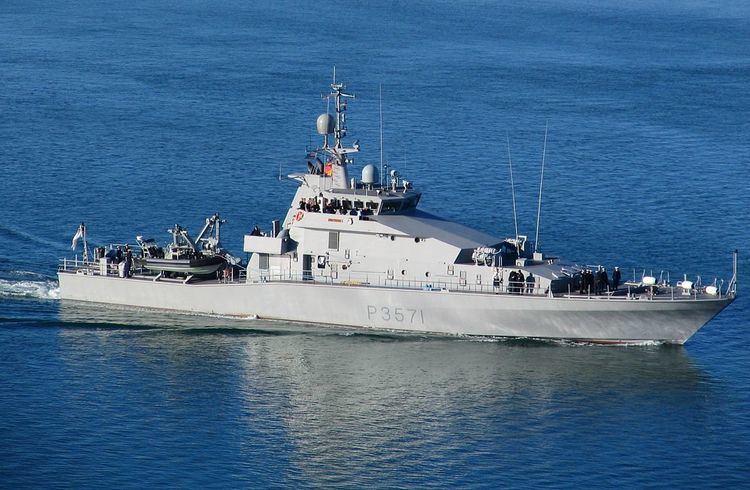Operators Royal New Zealand Navy Succeeded by N/A | Preceded by Moa-class patrol boat | |
 | ||
Name Protector-class inshore patrol vessel Builders BAE Systems Australia (then Tenix Shipbuilding), Whangarei Cost NZ$35.8 million (per vessel, 2008) | ||
The Protector-class inshore patrol vessel (also known as the Rotoiti-class and the Lake-class) is a ship class of inshore patrol vessels (IPVs) of the Royal New Zealand Navy (RNZN) which replaced the RNZN's Moa-class patrol boats in 2007–2008. All four vessels are named after New Zealand lakes.
Contents
Following long-running Navy retention problems in the wake of NZDF "civilianisation", two of the four vessels have been tied up, inactive, in a 'Reduced Activity Period' for long periods since 2013. It was announced on 14 April 2016 that some of the vessels might be sold.
Design and construction
Conceived as part of Project Protector, the Ministry of Defence acquisition project to acquire one multi-role vessel, two offshore and four inshore patrol vessels. The Project Protector vessels were to be operated by the RNZN to conduct tasks for and with the New Zealand Customs Service, the Department of Conservation, Ministry of Foreign Affairs and Trade, Ministry of Fisheries, Maritime New Zealand, and New Zealand Police. The future duties will include maritime surveillance and boarding, support to civilian agencies such as the customs service and search and rescue duties.
The ships were built in Whangarei by BAE Systems Australia (formerly Tenix Shipbuilding), and are based on a modified search and rescue vessel for the Philippine Coast Guard, with a different superstructure design. The cost for the four vessels was planned to be NZ$100 million. Friction stir welding was used in the construction of the superstructure, and Donovan Group being the first New Zealand company to use the technique, which is credited as having won them the contract for this part of the vessel's construction.
Capabilities and features
The IPVs will normally be used for inshore tasks within 24 nautical miles (44 km; 28 mi) of the coastline. However, they will have operational ranges of 3,000 nautical miles (5,600 km; 3,500 mi). Together with their improved speed, this will be sufficient to intercept, for example, large off-shore fishing trawlers working illegally in New Zealand waters. Each vessel was intended to achieve 290 available patrol days per year.
The ships were intended to have the ability to patrol (including receiving vertical replenishment) in up to sea state 5 (seas rough, waves 2.5–4m) and have the ability to survive in conditions of up to sea state 8 (seas very high, waves 9–14m). However, boat deployment and recovery will be limited to sea state 4 (seas moderate, waves 1.25–2.5m). These parameters are much more capable than the Moa Class which they replace. The shipbuilder claims "the vessel is more than capable of extending the Crown's operational envelope to southern ocean patrol duties".
The patrol boats have seen only limited service. Since 2012 the RNZN has only been able to crew two of the ships. In April 2016 it was reported that Pukaki and Taupo had not put to sea since 2012 and late 2013 respectively, and the RNZN's website did not identify any activities conducted by Rotoiti since July 2012.
Possible sale
In April 2016 New Zealand Defence Minister Gerry Brownlee announced that the New Zealand Government was planning to sell the four ships and replace them with an additional offshore patrol vessel. He justified this on the grounds of the ships' low levels of operational availability, and stated that "they've proved themselves to be completely inappropriate for the sort of seas that we have around New Zealand". The opposition Labour Party's defence spokesman Phil Goff blamed shortages of naval personnel following cutbacks made by the National Party government in 2012 for the ships' inactivity (see civilianisation project Audit Report), and said that the RNZN still had a need for the vessels. Goff also questioned Brownlee's claim that the ships were unsuitable as they couldn't operate away from the coast, stating that this was not their intended role.
Names
These ships' names come from New Zealand lakes: Rotoiti and Taupo in the North Island, Hawea and Pukaki in the South Island. They were also the names of Lake-class patrol boats and frigates previously operated by the RNZN.
